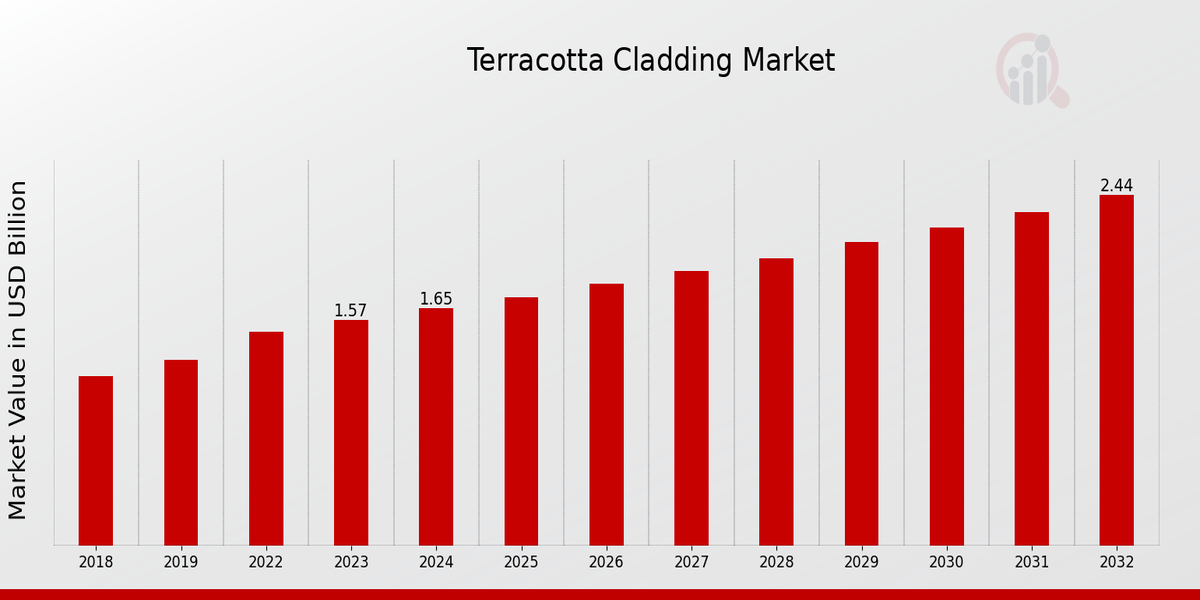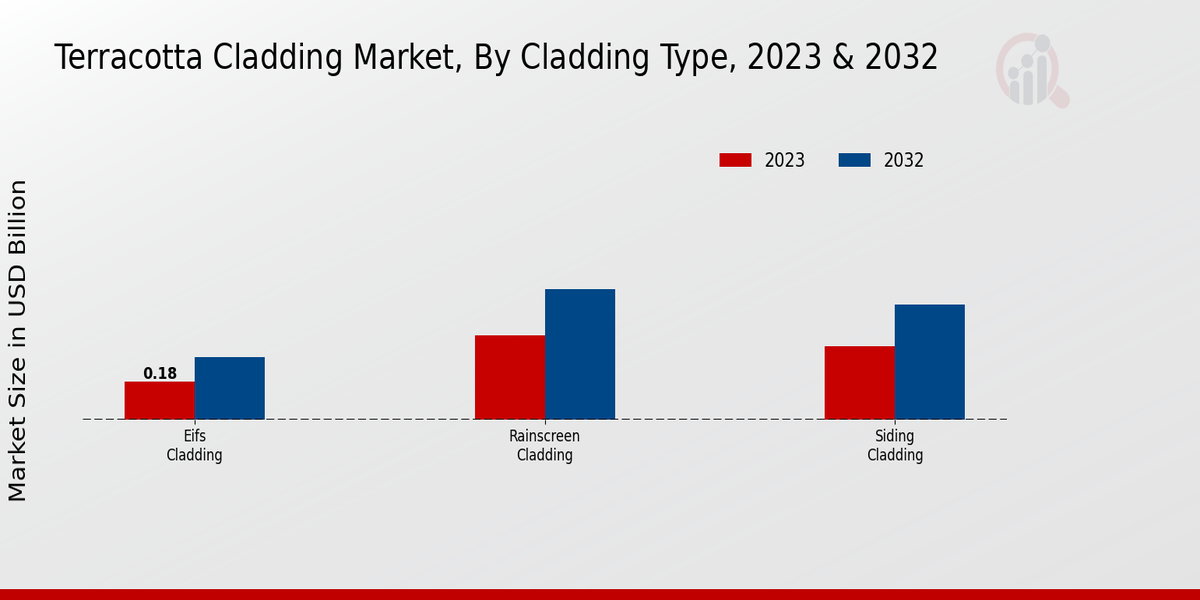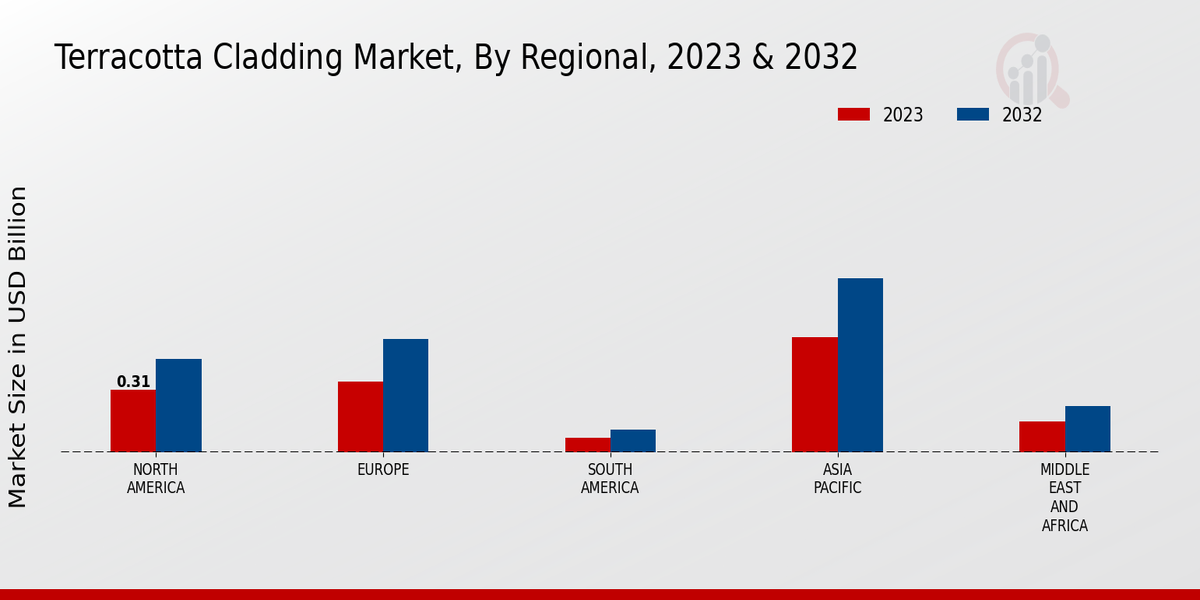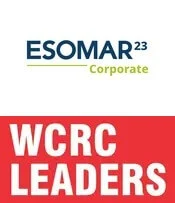Terracotta Cladding Market Overview
Terracotta Cladding Market Size was estimated at 1.73 (USD Billion) in 2024. The Terracotta Cladding Market Industry is expected to grow from 1.81(USD Billion) in 2025 to 2.82 (USD Billion) by 2034. The Terracotta Cladding Market CAGR (growth rate) is expected to be around 5.0% during the forecast period (2025 - 2034).
Key Terracotta Cladding Market Trends Highlighted
The Terracotta Cladding Market is experiencing significant growth, driven by increasing demand for durable, aesthetically pleasing, and sustainable building materials. The growing preference for energy-efficient and environmentally friendly construction practices is also contributing to the market's expansion. Terracotta's natural insulation properties and resistance to weathering make it an ideal choice for exterior cladding, leading to its widespread adoption in residential, commercial, and institutional buildings. Additionally, advancements in manufacturing technology have enabled the production of terracotta cladding with a wider range of textures, colors, and shapes, enhancing its architectural versatility and appeal.

Source: Primary Research, Secondary Research, MRFR Database and Analyst Review
Terracotta Cladding Market Drivers
Rising Demand for Sustainable Building Materials
The construction industry is witnessing a growing demand for sustainable building materials due to increasing environmental concerns and government regulations. Terracotta cladding, made from natural clay, offers excellent durability, thermal insulation, and moisture resistance, making it an attractive choice for eco-conscious builders. Its natural aesthetic appeal and versatility in design further contribute to its popularity in the Terracotta Cladding Market Industry. As the demand for green building practices continues to rise, the market for terracotta cladding is expected to experience significant growth in the coming years.
Expansion of the Commercial Construction Sector
The expansion of the commercial construction sector, particularly in emerging economies, is driving the demand for terracotta cladding. Commercial buildings, such as offices, retail spaces, and hospitality facilities, require durable and aesthetically pleasing exterior materials. Terracotta cladding meets these requirements, providing a cost-effective and long-lasting solution. As the commercial construction sector continues to grow, the demand for terracotta cladding is expected to increase.
Technological Advancements and Product Innovations
Technological advancements and product innovations are also contributing to the growth of the Terracotta Cladding Market Industry. Manufacturers are continuously developing new techniques to enhance the performance and aesthetics of terracotta cladding. For example, advancements in digital printing technology have enabled the creation of intricate designs and patterns on terracotta tiles, expanding their design possibilities. Additionally, research into self-cleaning and anti-pollution coatings is improving the durability and ease of maintenance of terracotta cladding.
Terracotta Cladding Market Segment Insights
Terracotta Cladding Market Cladding Type Insights
The market growth is attributed to the rising demand for terracotta cladding in the construction industry due to its durability, aesthetic appeal, and sustainability. The cladding Type segment plays an important role in the Terracotta Cladding Market. It is categorized into three main types: Rainscreen Cladding, EIFS Cladding, and Siding (Horizontal and Vertical) Cladding. Rainscreen Cladding is a type of cladding system that creates a ventilated cavity between the cladding and the building's exterior wall.
This cavity allows air to circulate, which helps to regulate the temperature and moisture levels inside the building.Rainscreen Cladding is often used in commercial and industrial buildings, as it is durable and can withstand harsh weather conditions. EIFS Cladding, or Exterior Insulation and Finish Systems, is a type of cladding system that consists of an insulating foam board that is attached to the building's exterior wall. The foam board is then covered with a thin layer of stucco or other finish material. EIFS Cladding is popular in residential and commercial buildings, as it is energy-efficient and can provide a variety of aesthetic finishes.
Siding (Horizontal and Vertical) Cladding is a type of cladding system that is installed horizontally or vertically on the building's exterior wall.Siding is often made of wood, vinyl, or metal, and it can be used to protect the building from the elements and to improve its appearance. Siding is a popular choice for residential and commercial buildings, as it is relatively inexpensive and easy to install. The market growth of Terracotta Cladding is driven by various factors, including the increasing demand for sustainable building materials, the growing popularity of rainscreen cladding systems, and the rising awareness of the benefits of terracotta cladding. Terracotta cladding is a sustainable building material that is made from natural clay, and it is durable, fire-resistant, and easy to maintain

Source: Primary Research, Secondary Research, MRFR Database and Analyst Review
Terracotta Cladding Market Material Insights
The Terracotta Cladding Market is segmented by material into natural clay terracotta, ceramic terracotta, and porcelain terracotta. Natural clay terracotta is the most common type of terracotta cladding and is made from natural clay that is fired at high temperatures. Ceramic terracotta is made from a mixture of clay and other materials, such as sand and feldspar, and is fired at a lower temperature than natural clay terracotta. Porcelain terracotta is made from a mixture of clay, feldspar, and quartz and is fired at a very high temperature.The natural clay terracotta segment is expected to account for the largest share of the Terracotta Cladding Market in 2024 and is projected to grow at a CAGR of 4.9% from 2024 to 2032.
The ceramic terracotta segment is expected to account for the second-largest share of the Terracotta Cladding Market in 2024 and is projected to grow at a CAGR of 5.2% from 2024 to 2032. The porcelain terracotta segment is expected to account for the smallest share of the Terracotta Cladding Market in 2024 but is projected to grow at the highest CAGR of 5.5% from 2024 to 2032.The growth of the Terracotta Cladding Market is being driven by the increasing demand for sustainable building materials. Terracotta cladding is a durable and versatile material that can be used to create a variety of architectural styles. It is also fire-resistant and weather-resistant, making it an ideal choice for exterior cladding applications.
Terracotta Cladding Market Application Insights
The Terracotta Cladding Market is segmented by application into building facades, interior walls, roofs, and other applications. Building facades is the largest segment, accounting for over 50% of the market in 2023. This is due to the growing popularity of terracotta cladding as a sustainable and aesthetically pleasing material for exterior walls. The interior walls segment is expected to grow at a CAGR of 6.5% over the forecast period, driven by the rising demand for terracotta cladding in commercial and residential buildings. The roof segment is expected to grow at a CAGR of 5.0% over the forecast period as terracotta cladding becomes increasingly popular for roofing applications.
Terracotta Cladding Market Finish Insights
The Terracotta Cladding Market is segmented by Finish into Glazed Terracotta, Unglazed Terracotta, and Textured Terracotta. Among these segments, Glazed Terracotta holds the largest market share due to its glossy finish, durability, and resistance to fading and staining. It is commonly used in commercial and residential buildings, particularly in regions with high levels of UV radiation. Unglazed Terracotta offers a more natural and earthy aesthetic, making it popular in traditional and rustic architectural styles.
Textured Terracotta provides a unique and visually appealing surface, adding depth and character to building facades. The Terracotta Cladding Market for Glazed Terracotta is projected to reach USD 1.2 billion by 2028, exhibiting a CAGR of 5.4% during the forecast period.
Terracotta Cladding Market Installation Method Insights
The Terracotta Cladding Market is segmented based on installation method into secret-fix system, exposed-fix system, and dry-hanging system. Among these, the secret-fix system segment held the largest market share in 2023, owing to its aesthetic appeal and ability to create a seamless facade. It allows for a concealed fixing system, resulting in a clean and minimalist appearance. This system is commonly used in commercial buildings, such as offices and retail spaces, where a sophisticated and modern look is desired.
The dry-hanging system is expected to witness the fastest growth over the forecast period.This system involves suspending the terracotta panels from a metal framework, allowing for easy installation and maintenance. It is commonly used in high-rise buildings and structures with complex geometries, where accessibility and flexibility are key considerations. The exposed-fix system, on the other hand, is characterized by visible fixings that add a decorative element to the facade. This system is often used in traditional and historical buildings to maintain their architectural integrity.
Terracotta Cladding Market Regional Insights
The Terracotta Cladding Market is segmented into North America, Europe, APAC, South America, and MEA. Among these regions, APAC is expected to hold the largest market share in 2024, owing to the increasing construction activities in emerging economies such as China and India. Europe is expected to be the second-largest market for terracotta cladding, followed by North America. The market in South America and MEA is expected to grow at a significant pace due to the rising demand for sustainable and energy-efficient building materials.

Source: Primary Research, Secondary Research, MRFR Database and Analyst Review
Terracotta Cladding Market Key Players And Competitive Insights
The Terracotta Cladding Market is experiencing significant growth, driven by increasing demand for sustainable and aesthetically appealing architectural solutions. This market is characterized by a diverse range of players, each contributing unique features and innovations to enhance their offerings. The competitive insights reveal a landscape marked by strategic partnerships, technological advancements, and an emphasis on sustainability.
Major players in the Terracotta Cladding Market are focusing on product diversification and tailoring solutions to meet the specific needs of various architectural styles and regulatory frameworks. With the rise of eco-friendly construction practices, the Terracotta Cladding Market industry is increasingly attracting attention from architects and developers looking for materials that offer durability and environmental benefits. The competitive landscape is shaped by leading Terracotta Cladding Market players who are leveraging their expertise to improve design capabilities, enhance product performance, and ensure compliance with global standards, fostering a robust environment for market development.
The integration of digital technologies for design and manufacturing processes is also becoming a critical differentiator among competitors, allowing for more customized and efficient production techniques.One of the leading players in the Terracotta Cladding Market is Nexclad. This company has established a strong foothold in the industry through its commitment to innovation and sustainability. Nexclad specializes in producing high-quality terracotta cladding solutions that cater to a wide array of architectural requirements. They employ advanced manufacturing techniques to ensure that their products meet strict performance standards while also focusing on minimizing environmental impact.
Through continuous research and development, Nexclad has been able to introduce cutting-edge designs and finishes that appeal to architects seeking to enhance the aesthetic value of their projects. Moreover, Nexclad is also recognized for its comprehensive customer service and support, which helps clients navigate the complexities of material selection and installation, thereby solidifying its reputation as a trusted partner in the Terracotta Cladding Market.In the competitive arena of the Terracotta Cladding Market, another notable company is TerraCotta Innovations.
This firm is known for its focus on integrating traditional craftsmanship with modern technologies to create innovative terracotta solutions. TerraCotta Innovations places a strong emphasis on sustainable production and uses locally sourced materials to reduce its carbon footprint. The company's product line includes a variety of terracotta tiles and panels that are designed to enhance both the functional and aesthetic elements of buildings.
TerraCotta Innovations actively collaborates with architects and contractors to develop custom solutions that meet specific project needs, fostering innovation through cooperative design approaches. Their dedication to quality and sustainability not only differentiates them from other competitors but also aligns them with the growing trend toward environmentally responsible architecture and construction practices in the Terracotta Cladding Market industry.
Key Companies in the Terracotta Cladding Market Include
- Argeton
- San Marco TerracotteneuparaNBK
- Leach Pottery
- Universal Ironcrafters
- Timbmet
- Agrob Buchtal
- Etex Group
- Creadomo Group
- Kenndrew
- Wienerberger AG
- US Tile and Marble
- Terreal
- Ommod Group
- Permasteelisa
Terracotta Cladding Market Industry Developments
The Terracotta Cladding Market is experiencing significant growth, driven by increasing demand for sustainable and aesthetically appealing construction materials. In 2023, the market was valued at approximately USD 1.57 billion, with projections suggesting it will reach around USD 2.44 billion by 2032, reflecting a compound annual growth rate (CAGR) of 5.02%. Recent developments have seen heightened awareness of architectural designs that focus on eco-friendly materials, leading to heightened interest in terracotta cladding. Various countries are adopting stringent building codes promoting energy-efficient solutions, further boosting market growth.
Innovations in terracotta production have also enhanced thermal performance and durability, appealing to both residential and commercial sectors. Key market players are investing in research and development to expand product offerings and improve installation techniques. Additionally, the rise in urbanization and infrastructural developments globally is fostering an increased application of terracotta cladding in various projects, including facades and interior design, reflecting changing consumer preferences toward sustainable and innovative architectural solutions. As of 2024, major industry trends indicate a shift toward integrating modern technology with traditional terracotta craftsmanship, enhancing both performance and aesthetic appeal in contemporary designs.
Terracotta Cladding Market Segmentation Insights
-
Terracotta Cladding Market Cladding Type Outlook
- Rainscreen Cladding
- EIFS Cladding
- Siding (Horizontal and Vertical) Cladding
-
Terracotta Cladding Market Material Outlook
- Natural Clay Terracotta
- Ceramic Terracotta
- Porcelain Terracotta
-
Terracotta Cladding Market Application Outlook
- Building Facades
- Interior Walls
- Roofs
- Other Applications
-
Terracotta Cladding Market Finish Outlook
- Glazed Terracotta
- Unglazed Terracotta
- Textured Terracotta
-
Terracotta Cladding Market Installation Method Outlook
- Secret-Fix System
- Exposed-Fix System
- Dry-Hanging System
-
Terracotta Cladding Market Regional Outlook
- North America
- Europe
- South America
- Asia Pacific
- Middle East and Africa
Terracotta Cladding Market Report Scope
| Report Attribute/Metric |
Details |
| Market Size 2024 |
1.73(USD Billion) |
| Market Size 2025 |
1.81(USD Billion) |
| Market Size 2034 |
2.82(USD Billion) |
| Compound Annual Growth Rate (CAGR) |
5.0% (2025 - 2034) |
| Report Coverage |
Revenue Forecast, Competitive Landscape, Growth Factors, and Trends |
| Base Year |
2024 |
| Market Forecast Period |
2025 - 2034 |
| Historical Data |
2020 - 2024 |
| Market Forecast Units |
USD Billion |
| Key Companies Profiled |
Argeton, San Marco TerracotteneuparaNBK, Leach Pottery, Universal Ironcrafters, Timbmet, Agrob Buchtal, Etex Group, Creadomo Group, Kenndrew, Wienerberger AG, US Tile and Marble, Terreal, Ommod Group, Permasteelisa |
| Segments Covered |
Cladding Type, Material, Application, Finish, Installation Method, Regional |
| Key Market Opportunities |
Sustainable construction demands Architectural aesthetic enhancement and Efficient building solutions. Urbanization led to housing growth and Customizable design options. |
| Key Market Dynamics |
Sustainable building materials demand Architectural aesthetics trends, Energy efficiency awareness, Rapid urbanization growth, and Technological advancements in materials. |
| Countries Covered |
North America, Europe, APAC, South America, MEA |
Frequently Asked Questions (FAQ) :
The expected market size of the Terracotta Cladding Market in 2024 is valued at approximately 1.73 billion USD.
The projected market size of the Terracotta Cladding Market by 2034 is 2.82 billion USD.
The Compound Annual Growth Rate (CAGR) for the Terracotta Cladding Market from 2025 to 2034 is anticipated to be 5.0%.
North America is anticipated to dominate the Terracotta Cladding Market during the forecast period.
The primary applications of Terracotta Cladding include residential buildings, commercial buildings, and architectural facades.
The growth of the Terracotta Cladding Market is driven by increasing construction activities and the rising demand for aesthetic building materials.
Key competitors in the Terracotta Cladding Market include manufacturers specializing in high-performance building materials.
The demand for Terracotta Cladding is expected to grow steadily throughout the forecast period due to rising urbanization
The Terracotta Cladding Market is positively impacted by the trend toward sustainable construction practices, as terracotta is a recyclable material.
Unique benefits of using Terracotta Cladding in construction include its durability, aesthetic appeal, and thermal insulation properties.















